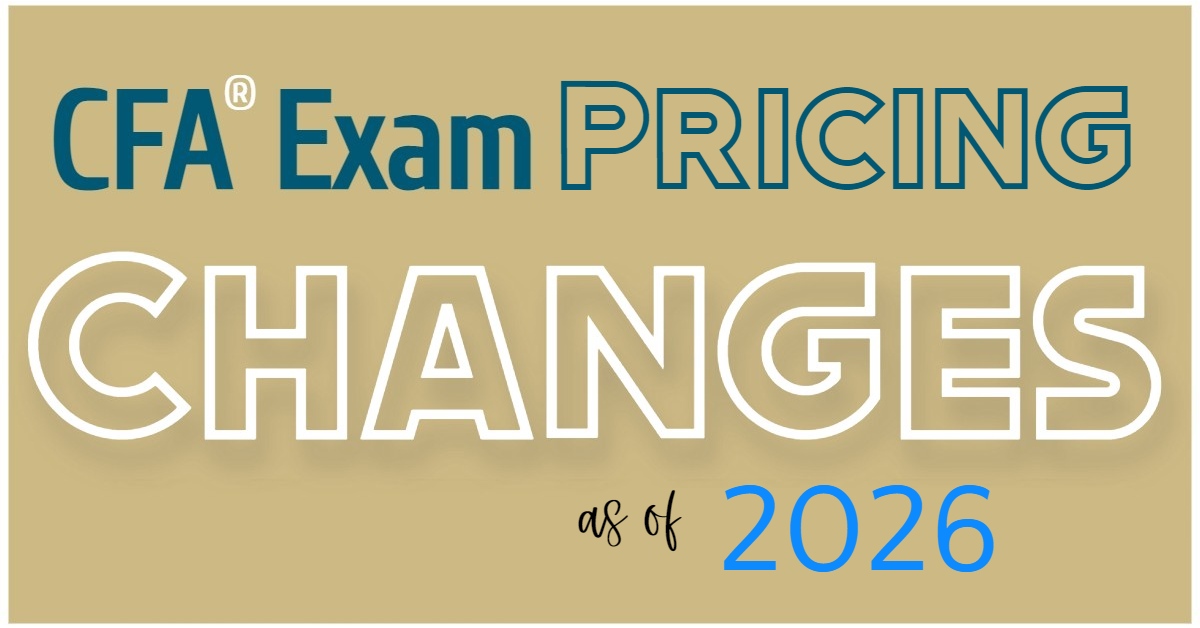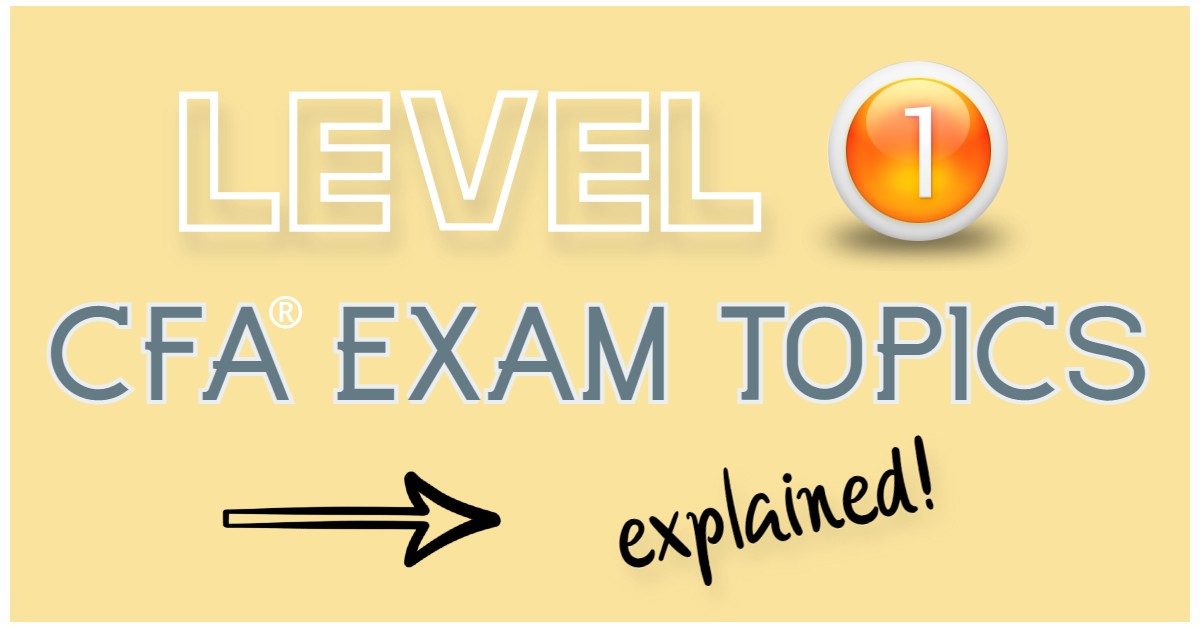
- What Is CFA?
- Is CFA Charter Globally Recognized?
- Chartered Financial Analyst Exams
- Is CFA Exam Hard?
- CFA Exam Level by Level
- CFA Exam Registration
- CFA Exam Topics
- CFA Exam Study Plan
- CFA Exam Day
- CFA Exam Results
- Passed CFA Exam: Prerequisite for CFA Charter
What Is CFA®?
CFA stands for Chartered Financial Analyst®, which is a renowned financial certification awarded by CFA Institute to those who complete the 3 levels of the CFA exam with success. To earn your CFA designation, you need to pass the CFA exam and meet specific requirements.
Is CFA Charter Globally Recognized?
The CFA Charter is a popular designation in the world of finance because it is globally recognized and considered prestigious in many areas of the investment industry. To gain the CFA Charter means to be able to use the "CFA" title with your name, which is synonymous with professional competence and integrity and appreciated by both employers and clients.
That is why the CFA exam is a coveted credential to have in your résumé if you seek a career in finance. As a CFA candidate, you will learn about the fundamentals of investment tools, asset valuation, portfolio management, and wealth planning.
The exam is held by CFA Institute, an American institution that introduced the CFA Charter in 1963 and has been improving this prestigious financial certification ever since. From year to year, CFA Institute alters the exam curriculum wherever necessary for the CFA exam to reflect ongoing changes in the rapidly developing financial world. In 2021, CFA exam moved to computer-based testing and starting in 2024 the so-called Practical Skills Modules (PSMs) are being introduced in response to employers who need their future employees to be more practical.
Chartered Financial Analyst Exams
Is CFA Exam Hard?
The CFA exam has 3 levels. To pass the CFA exam means to pass all the 3 levels. You can take your CFA exam a maximum of 6 times per level. The exam difficulty increases from level to level.
CFA EXAM = LEVEL 1 + LEVEL 2 + LEVEL 3
A look at the CFA exam pass rates suggests that the CFA exam can be quite hard. Many need to retake their exams and passing the CFA exam at the first attempt is definitely not a common thing.
The lowest pass rate is for the level 1 CFA exam. The 10-year average level 1 CFA exam pass rate is now 41%. For the level 2 CFA exam, it's 46%. The highest average pass rate of 51% is for the level 3 CFA exam. Keeping the quite low passing scores in mind, it's best to take your CFA exam prep seriously. If you wonder when to start your CFA exam prep, start early enough to plan more than 300 study hours and follow your study plan thoroughly.
Importantly, it is the demanding nature of the CFA exam that allows the CFA designation to be so prestigious and coveted. When you gain your CFA Charter (or even pass one level of the three-part CFA exam), you can truly say that you've earned it. Also, others will surely appreciate your success and proficiency .
To help candidates showcase their achievements, CFA Institute awards digital badges for passing level 1 and level 2 CFA exams. It is meant to increase the recognition of the CFA Charter and the concrete passed levels of the CFA exam among employers. The badges will also be offered retrospectively to past candidates who were successful at various levels.
CFA Exam from Registration to Results
Level by Level
Although each CFA exam level is different, major stages remain the same from level to level. The route always begins with registration and ends when CFA exam results are released.
STAGES FOR LEVEL 1, LEVEL 2 & LEVEL 3 CFA EXAMS:
1. REGISTRATION
Each time you want to register for your CFA exam (all levels and retakes), you need to make a fee payment. There are 2 registration fee deadlines and your CFA exam cost will differ depending on which deadline you choose. Moreover, CFA exam cost reduction even down to $400 is available to those eligible for CFA Program Scholarships. Be sure to check before you decide to register for your exam. If you are ineligible for a scholarship, you must pay an unreduced registration fee:
CFA EXAM REGISTRATION FEES IN 2026:
- level 1 early registration fee = $1140
- level 2 early registration fee = $1140
- level 3 early registration fee = $1240
- level 1 standard registration fee = $1490
- level 2 standard registration fee = $1490
- level 3 standard registration fee = $1590
CFA EXAM SCHEDULING:
The CFA exam registration is one thing. Quite another is to schedule the exact date of your CFA exam. Registration is mainly about the payment and it only says which exam you'll be taking: in February, May, August, or November. These are the 4 exam windows when CFA exams are available starting in 2021. After you register for your exam, you need to self-schedule your exact CFA exam date within the chosen exam window. As a rule, the exam window may be up to 10 days long, depending on the test center and geographic area.
CFA EXAM WINDOWS IN 2026:
- LEVEL 1: Feb 2-8, May 12-18, Aug 18-24, Nov 11-17
- LEVEL 2: May 19-23, Aug 25-29, Nov 18-22
- LEVEL 3: Feb 29-1, Aug 13-17
NOTE: The scheduling period is always longer than the registration period. Then, there's also the so-called rescheduling deadline. You can re-schedule your exam appointment within the exam window you chose and after making an additional payment of $250 for each re-appointment. To read more about CFA exam fees, visit our blog.
2. GETTING TO KNOW CFA PROGRAM CURRICULUM & TOPICS
For every exam level, there is a separate CFA exam curriculum, each over 3000 pages and covering relevant topics.
Level 1 exam books are greatly conceptual. In your exam, you need to be able to recall various concepts and terms and understand different investment tools.
Level 2 exam books are more analytical and you’ll be asked to apply your knowledge more deeply in your exam. The focus of the exam is on asset valuation.
Level 3 merges both the conceptual and the analytical by asking you to evaluate and justify. It gives the highest prominence (30-35%) to one of three specialized pathways, namely Portfolio Management, Private Markets, or Private Wealth.
The level 1 CFA exam syllabus includes 10 exam topics. Also, level 2 candidates are tested in 10 exam subjects. For level 3, it’s just 5 core topics + one of the three specialized pathways. Also, exam topic weights change from level to level:
| CFA Exam Topics | Level 1 Weights | Level 2 Weights |
|---|---|---|
| Quantitative Methods | 6-9% | 5-10% |
| Economics | 6-9% | 5-10% |
| Corporate Issuers | 6-9% | 5-10% |
| Financial Statement Analysis | 11-14% | 10-15% |
| Equity Investments | 11-14% | 10-15% |
| Fixed Income | 11-14% | 10-15% |
| Derivatives | 5-8% | 5-10% |
| Alternative Investments | 7-10% | 5-10% |
| Portfolio Management | 8-12% | 10-15% |
| Ethical and Professional Standards | 15-20% | 10-15% |
| Level 3 CFA Exam Topics | Weight | |
|---|---|---|
| 1 | Asset Allocation | 15-20% |
| 2 | Portfolio Construction | 15-20% |
| 3 | Performance Measurement | 5-10% |
| 4 | Derivatives and Risk Management | 10-15% |
| 5 | Ethical and Professional Standards | 10-15% |
In addition to the 5 core level 3 CFA exam topics which are obligatory to all level 3 candidates, there are the three specialized pathways. As a level 3 candidate, you choose one of the three options and specialize in it:
| Level 3 CFA Exam Specialized Pathway | Weight | |
|---|---|---|
| 1 | Portfolio Management | 30-35% |
| 2 | Private Markets | 30-35% |
| 3 | Private Wealth | 30-35% |
3. STUDY PLANNING
It’s common knowledge that to prepare for your CFA exam, you’ll need to devote around 300 study hours per level. Personally, we also strongly advocate a weekly approach to study planning. We believe it can make your CFA exam study plan actually work . First, get yourself a 300-hour study schedule that sets deadlines for the topics. Then, however, focus on your current study week. That’s the only way to pace yourself and follow the plan!
On our blog, you will find some ready-made study plans, which you can further customize to your needs using our CFA Exam Study Planner (available to all levels). Apart from sample study plans, you’ll also find lots of interesting info related to study planning such as topic categorization, strengths and weaknesses analysis, or strategic vs tactical planning description.
4. STUDYING & TAKING CFA EXAM
While studying for your CFA exam, you should let yourself fall into a routine with your calculator. Mind that there are only 2 types of calculators approved by CFA Institute: Hewlett Packard 12C (different models) or Texas Instruments BA II Plus (different models).
Also, regularly review the topics and practice using exam-type questions. Remember that you learn most through practice. That’s why it is so important to do tests and use your calculator from the very beginning of your exam prep. We often use the approved TIBA II Plus Professional calculator in our videos and test questions to explain exam-type problems. Many level 1 and level 2 videos are free at Soleadea. Apart from free videos, you can also find free questions, reading notes, review tests, or formula lists inside your free CFA exam study plan (especially if you're a level 1 candidate):
GET FREE CFA EXAM STUDY MATERIALS
Also, we explain many level 1 exam concepts on our blog. Click on to read and learn:
- CORPORATE ISSUERS blog posts
- ETHICS blog posts
- QUANTITATIVE METHODS blog posts
- FIXED INCOME blog posts
- PORTFOLIO MANAGEMENT blog posts
- FINANCIAL STATEMENT ANALYSIS blog posts
There's one more thing you should definitely read before your exam, namely all the rules and policies that regulate exam-taking and your participation in the whole CFA Program. For our users, we have prepared a short selective summary of CFA Program policies but we strongly encourage you to read all the terms and conditions governing the CFA exam and provided by CFA Institute.
CFA EXAM DAY
The CFA exam itself is a test (take mock) if you sit your level 1 and level 2 exams and a test/written response if you're a level 3 candidate:
| CFA Exam | SESSION 1 | SESSION 2 |
|---|---|---|
| Level 1 | 90 multiple-choice questions | 90 multiple-choice questions |
| Level 2 | 44 multiple-choice questions (divided into item sets) |
44 multiple-choice questions (divided into item sets) |
| Level 3 | 6 essay sets + 5 item sets (like for level 2) |
5 essay sets + 6 item sets (like for level 2) |
Before 2021, all levels were paper-based. But beginning in 2021, the CFA exams are held on computers. The decision to move CFA exams to computer-based testing was accelerated by the COVID-19 pandemic.
5. RESULTS
The questions we all ask ourselves at this stage is: PASSED or FAILED? When will I know?
Usually, CFA exam results are released after about 5-7 weeks for level 1 and level 2 exams, and 6-8 weeks for level 3. They are sent to candidates’ e-mails. The message you’ll receive will say whether you passed or not. If you pass, it means you reached the minimum passing score (MPS) set individually for every CFA exam, but not disclosed by CFA Institute. It is believed that 70% is enough to succeed.
To pass the exam, you do not have to score over 70% for every topic. It’s the overall exam score that matters. However, you may want to pay attention to your Ethics result because of the ethics adjustment.
When the results are released, you’ll find out more about your performance in different topics in your CFA Institute website account. Also, you’ll get to know how well you did relative to other exam-takers.
waiting time: 5-7 weeks for level 1 & level 2, and 6-8 weeks for level 3
CFA exam minimum passing score: ca. 70%
level 1 CFA exam pass rate: ca. 41%
level 2 CFA exam pass rate: ca. 46%
level 3 CFA exam pass rate: ca. 51%
Passed CFA Exam: Prerequisite for CFA Charter
One of the requirements for becoming a CFA charterholder is a passed CFA exam, all levels.
The CFA exam is a difficult challenge. Having seen all CFA exam pass rates, you get to understand it is not easy to gain the Chartered Financial Analyst designation. You’ve set out on a long and difficult journey. But while the CFA exam road can have its twists and turns, there are ways to make it much less bumpy and a lot nicer.
Let us guide you
through the meanders of the CFA exam maze the easiest way.
It is not to say there will be no ups and downs. You may stumble now and then. But we can promise you will not get lost in the complexities of the exam. Soleadea is the place to give you comprehensive support: solid info, all kinds of CFA exam study materials and tools, as well as unique practical tips.
JOIN US
FOR GOOD STUDY TIME
About Soleadea:
Our CFA Exam Study Planner is available to candidates of all levels at groundbreaking Pay-What-You-Can prices. You decide how much you want to pay for our services. After you activate your account, you get unlimited access to our Study Planner 4.0 with study lessons inside, various level 1/level 2 study materials & tools, regular review sessions, and a holistic growth approach to your preparation. Join
Read Also:




